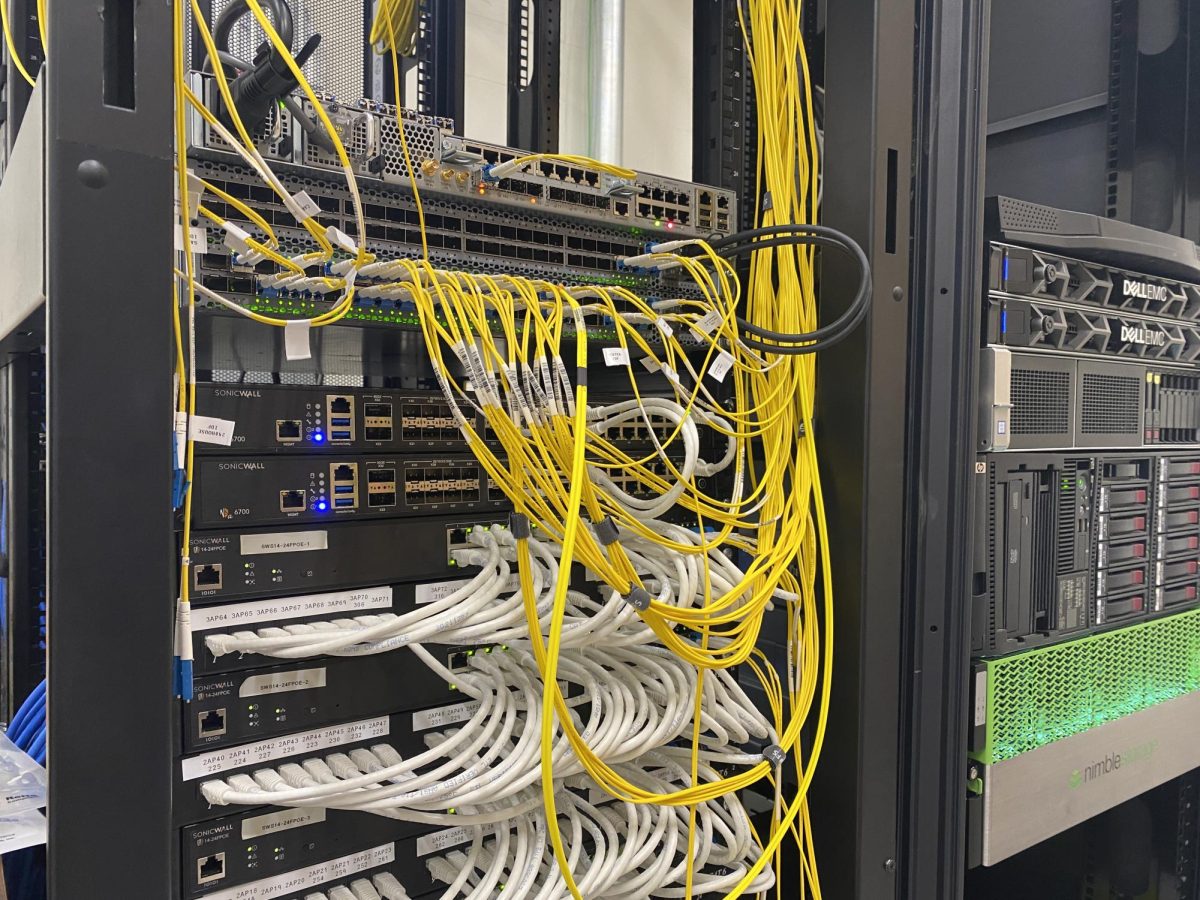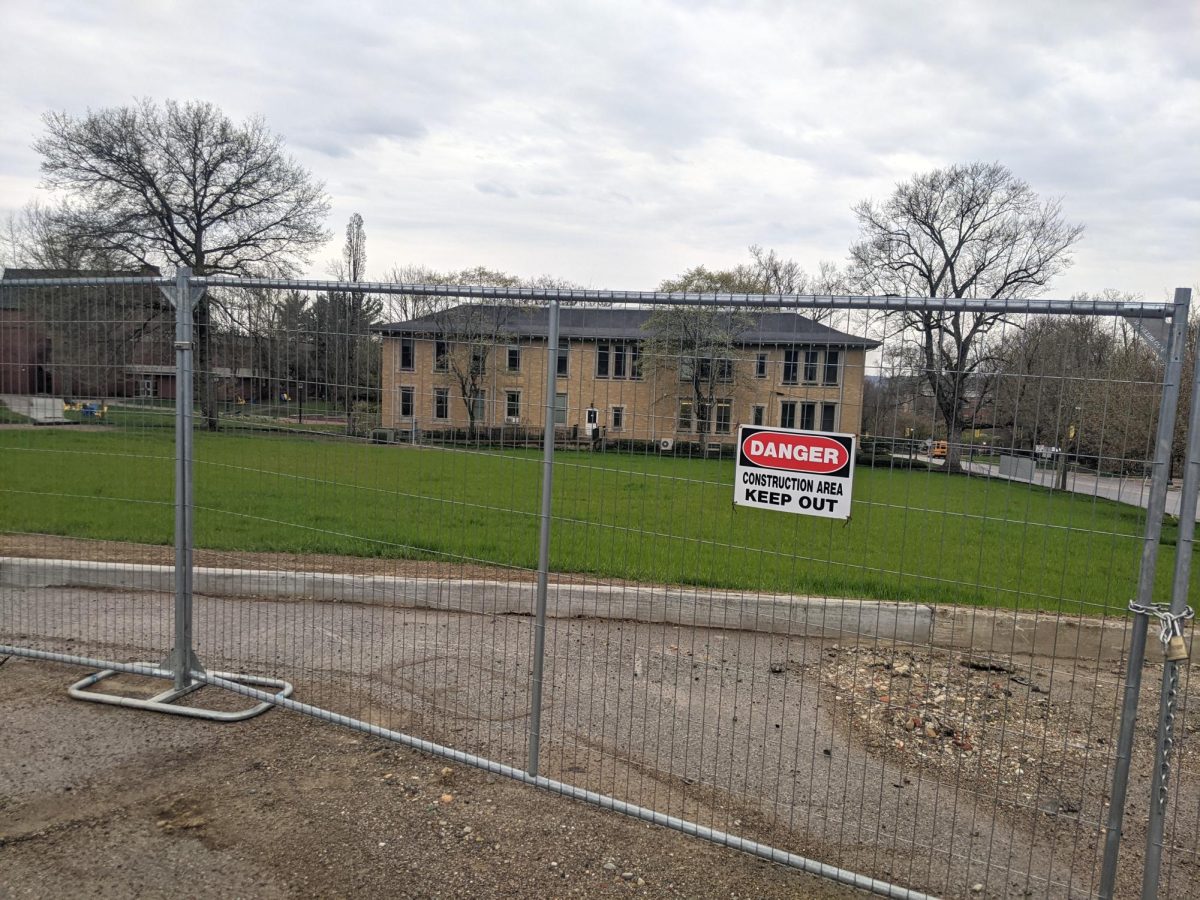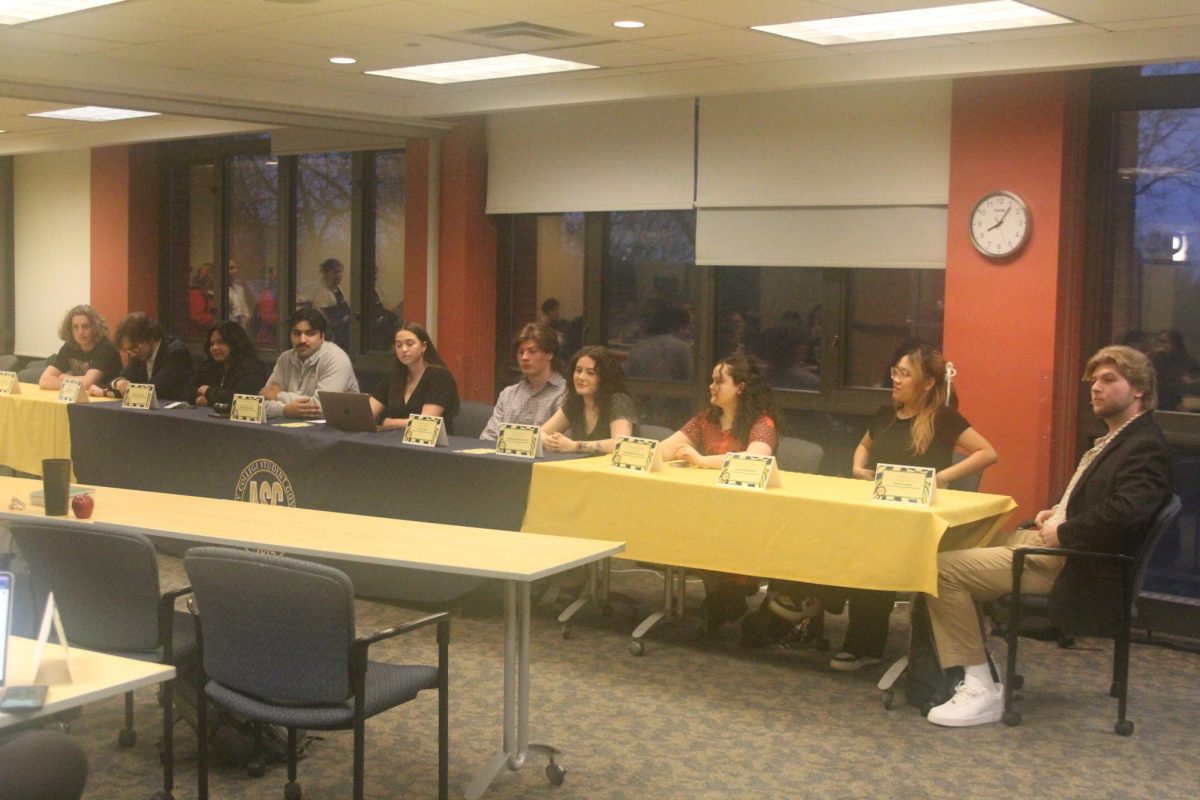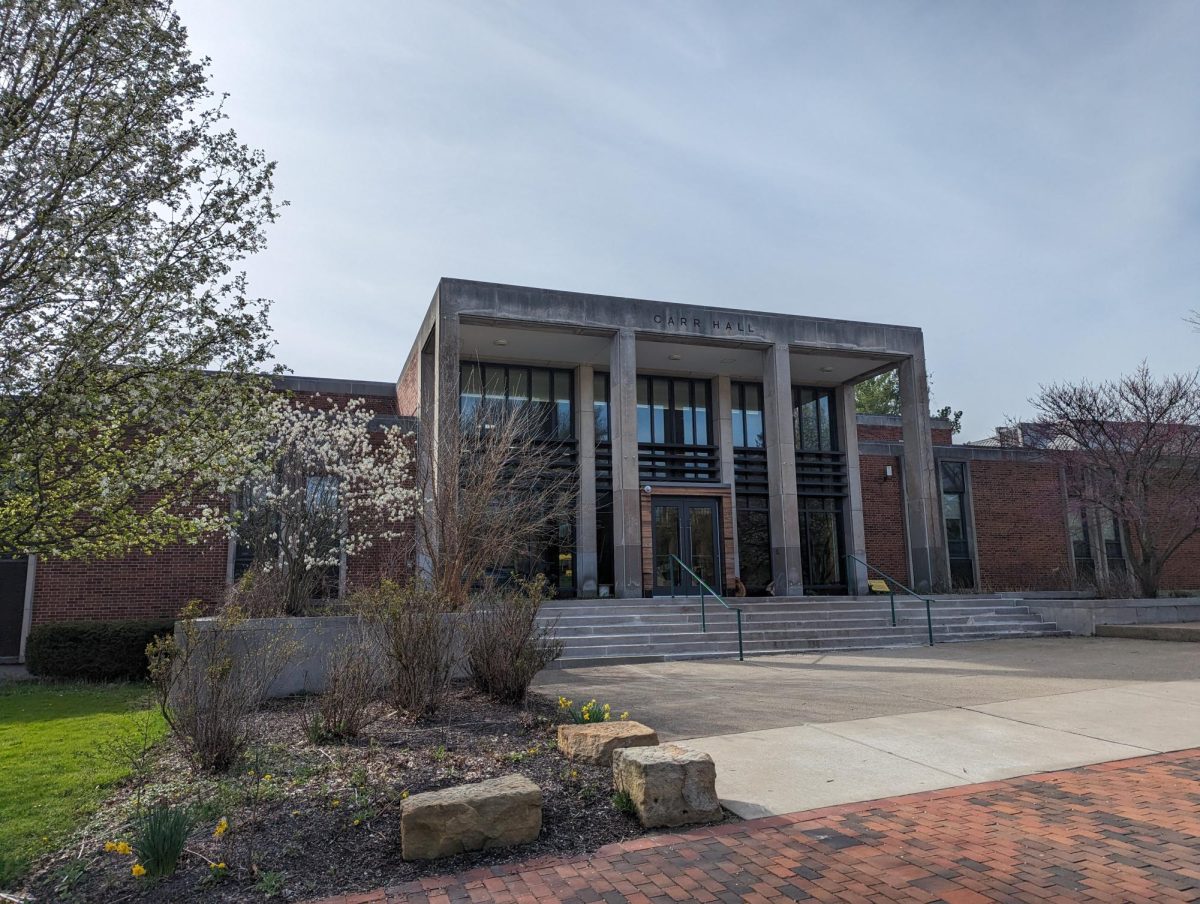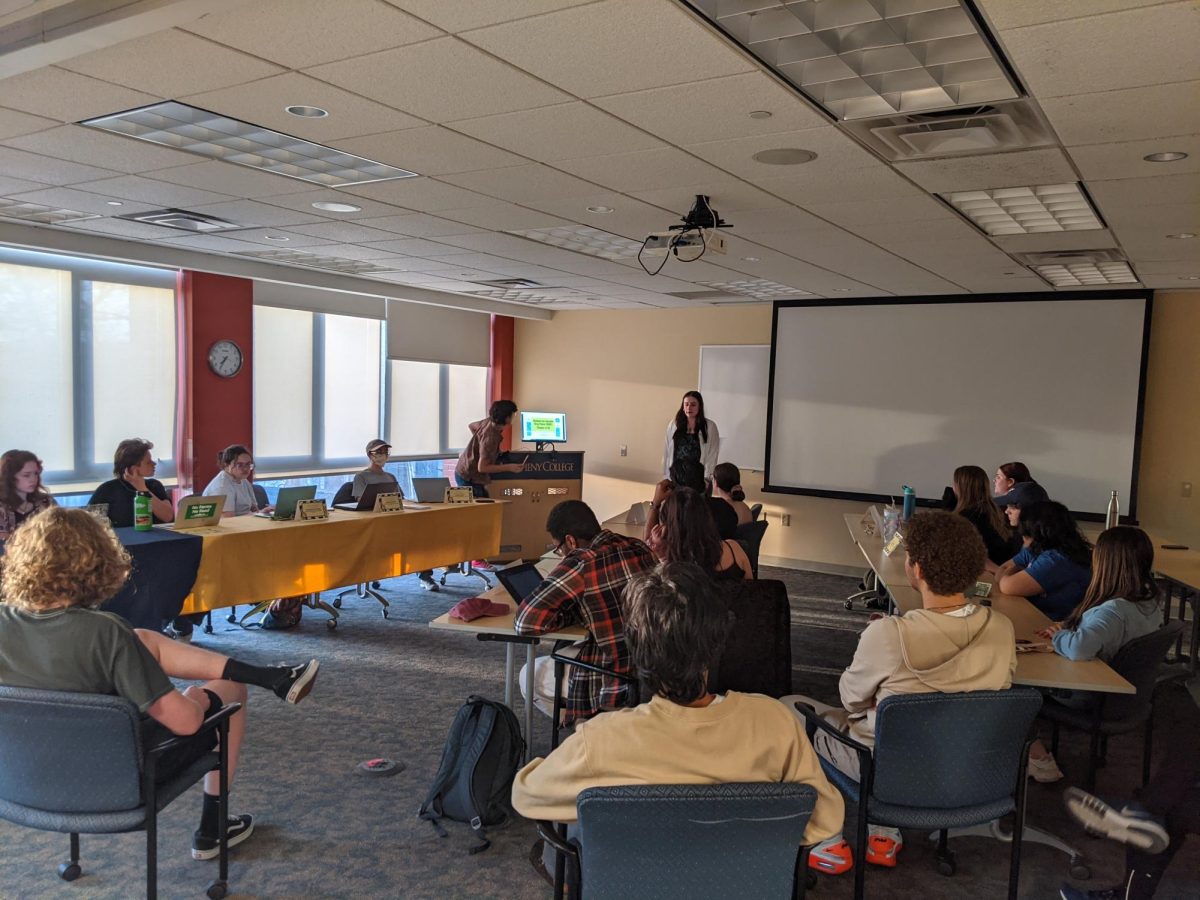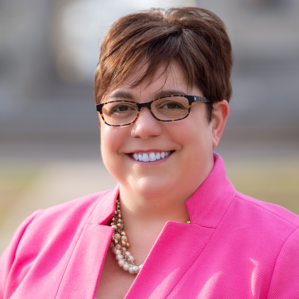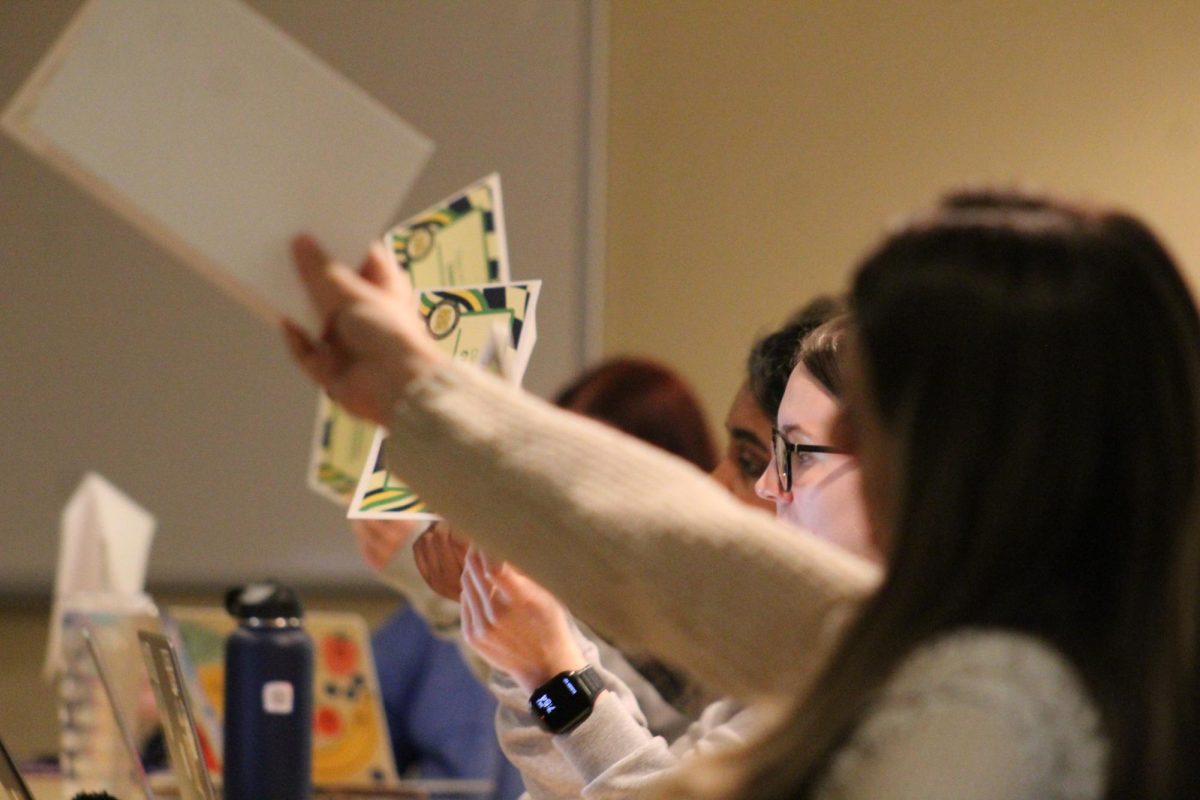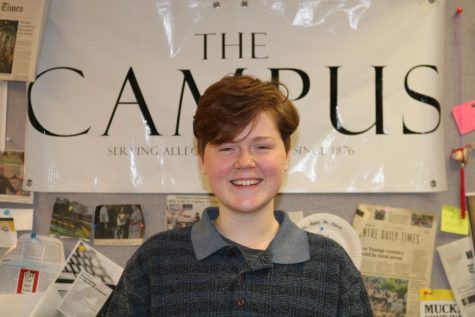Three weeks into the academic year, Wi-Fi issues persist on campus, though work to optimize network connectivity continues. While most of the access points across campus are now tuned, the college’s Information Technology team is still dealing with dysfunctional equipment installed by Wi-Fiber, supply chain delays preventing the installation of a critical piece of network infrastructure for another month, and a denial-of-service cyberattack that occurred on Friday, Sept. 1, at 7:40 a.m.
President Ron Cole, ’87, expressed his frustration with the current network issues in a Sept. 13, campus-wide email.
“I want to start by thanking you for your patience, which is understandably wearing thin, as we work to bring our internet network to the standard of what is expected by everyone in our community, including me,” Cole wrote. “I wish I had better news to share as you have not been provided the service that you deserve. We will continue to prioritize these improvements; please know that this is a top focus of mine and the entire leadership team.”
Cole explained that the network update that was originally designed to improve user experience has “failed” so far due to the previous network provider Wi-Fiber’s handling of the project. Cole described Wi-Fiber as being unable “to meet the standards of what is needed for our daily operations and residences.”
IT has determined that much of the network needs to be rebuilt in order to replace failing equipment and complete work that was unfinished — all of which is a huge endeavor, according to Cole.
“You may not see them (IT) around campus, as much of their work is behind the scenes, but rest assured that an incredible amount of work is being completed,” Cole wrote.
Shaken to the core
Chief Information Officer Katrina Yeung is aware of the myriad of network connectivity issues plaguing campus, including the network randomly “dropping” for about 30 seconds. She attributes this problem to the type of core switch that Wi-Fiber purchased.
Yeung described the core switch as being the basic brains behind the entire network.
“The one that we have, it just can’t handle the traffic that we’re trying to push through it,” Yeung said. “Wi-Fiber should have known how to adequately purchase something that would handle the traffic we were going to pass through it.”
Supply chain issues are delaying the procurement of the core switch, but Cole assured the campus community in his email that the core switches will be replaced in the next two to four weeks.
Once the network infrastructure is stabilized by the new core switch, Yeung anticipates that the Wi-Fi will become more stable for users.
In the meantime, IT is working to tune access points across campus in an effort to increase network connectivity speeds for users. To tune the access points, IT strategically placed them on varying radio channels so that devices can more easily identify where they are supposed to connect to.
Yeung and her team made a tuning pass during a scheduled outage at 4 a.m. on Sept. 1, and then made a second pass on Tuesday, Sept. 5, because they “didn’t like the results from Friday.”
“We’re hoping that that has improved some of the performance, and now we’re working on just making sure they’re all turned on,” Yeung said. “We did a walk of campus late last week and there are access points hanging on a ceiling that are not connected to anything, and they won’t work unless there’s a wire behind them and other randomness like that.”
In addition to tuning the access points, Cole said that many of them will have to be replaced to improve coverage across campus.
Cyberattack
The Sept. 1, denial of service attack was unrelated to the ongoing network improvement project, though it did result in a multi-hour network outage that exacerbated connectivity issues for those on campus.
“Our new firewalls did their job and protected our systems by shutting down all connections,” Chief Information Officer Katrina Yeung wrote in a campus-wide email sent out on Sept. 1. “The team restored connection around 10:00 a.m. We are working to adjust our firewalls to handle future attacks without the level of network disruption that occurred today.”
A denial-of-service attack occurs when malicious actors prevent network access for legitimate users by flooding a targeted host or network with traffic until the target cannot respond or simply crashes, according to the federal Cybersecurity & Infrastructure Security Agency. The primary function of the attack is to cause disruption. Since the attack on the college succeeded in triggering the firewalls to shut down network access for those on campus, Yeung said the attack succeeded.
“Cybersecurity is all in a day’s work,” Yeung said. “It’s not unusual for institutions to have denial-of-service attacks, but generally you have your firewall configured in such a way that it’s not as disruptive as it was here.”
IT was unable to identify the malicious actor who launched the attack because the firewalls reacted too quickly and severely. From the little information she was able to gather, though, Yeung could tell that the aggressor was outside of the college’s IP range.
The firewalls have already been re-programmed to have a more appropriate, less extreme response to similar cyber attacks in the future. Yeung and the IT team will continue to tweak the firewalls’ configurations going forward, which will allow IT to gather more information about malicious actors involved with potential future cyber attacks.
“It’s a continuous process,” Yeung said. “You’re never to a point of ‘done’ as it relates to cybersecurity because the bad guys are working just as hard to get in, and they only need to succeed once. And we need to succeed every time to keep them out, so there’s never a point of ‘done.’”
Cyberattacks occur fairly frequently at large institutions, which is why it is important to have the necessary infrastructure and cultural practices in place to protect institutions’ data, Yeung said. Cybersecurity is high on Yeung’s list of priorities in her new role as chief information officer.
Ongoing projects
“Something else that we want to implement is something called ‘fast roaming,” Yeung added. “Right now, your device will connect to an access point, and what we’re seeing is that your device wants to hold onto that access point for as long as possible, even if there’s another access point that has a better signal. As you get farther away from the one it originally grabbed on to, your speeds go down and down and down.”
Yeung said IT is actively working to configure the access points to engage in fast roaming.
“We just want to make sure that we test it well and we don’t break what we have,” Yeung said. “I don’t want to fix one thing to break something else. We’re trying to be a little slower and a little bit more intentional about what we’re doing.”
Carr Hall and Oddfellows are still the only academic buildings not connected to the campus’ fiber-optic cable system.
“We’re trying to determine — do we want to continue with the same access points that we’re currently using or do we want to pivot to something else?” Yeung said. “That decision will drive what kind of wiring we’ll need.”
Students speak
Charlotte Allen, ’25, said in an interview on Sept. 11, that while the internet had been working fairly well for her at the beginning of the semester, it has continuously gotten worse, impacting her ability to complete academic assignments and fill out the paperwork required of her as a resident advisor.
“My biggest feeling I think this evokes for me is just frustration,” Allen said. “I’m just really frustrated. I’m not angry. I’m not — obviously — happy. I understand people are working really hard to fix it. However, it’s really frustrating as a student to have this issue.”
Greta Leinart, ’25, was on campus for the initial scheduled outage on July 27 that turned into more than a month-long struggle to get the internet functioning and the replacement of Wi-Fiber with two new network providers.
Leinart said the Wi-Fi issues were so far-reaching that the card readers at Ravine Hall at the end of the summer did not allow her access to the building. Additionally, the hotspots she and fellow Ravine residents were given did not work.
As of Tuesday, Sept. 5, the Wi-Fi was not working in Quigley Hall or the Vukovich Center for Communication Arts, the buildings she had classes in.
“I’ve been using my hotspot — my paid hotspot — since July of this year,” Leinart said. “That includes on my computer to do all my work and that includes when I take it to my classes to take notes, to do a project. I upgraded my phone plan because of this. It was expensive.”
To assist students, Cole said the college has deployed mobile hotspots, opened computer labs for classes and individual use and extended the hours of Pelletier Library which he says has had more stable connectivity.
Cora Wilkins-McKee, ’27, lives in Crawford Hall and has medical equipment that requires a Wi-Fi connection to function. The hotspot that the college provided also does not work reliably, Wilkins-McKee said.
“I’m not mad with IT,” Wilkins-McKee said. “They’re doing everything they can. I’m mad with whoever made the decision to (switch to) Wi-Fiber.”
That decision was made by former Chief of Staff Kevin Kovalycsik, according to Yeung and Dean for Student Life Trae Yeckley.
“He was the one that found Wi-Fiber, he was the one that negotiated the contract, he signed it,” Yeung said in an interview with The Campus on Aug. 25.
Kevin left the college in October 2022, according to his LinkedIn profile.
The selection of Wi-Fiber has generated IT’s heavy workload this semester.
“In the first three to four weeks when we initially did the rollover with Wi-Fiber, the team and I were here probably 20 hours each day just pushing and pushing and pushing them to get it done,” Yeung said. “Since we’ve exited them, it’s more like 14-hour days, just working to try and fix anything that we possibly can, but there’s a lot of things outside of our control.”



